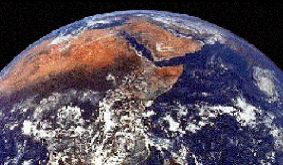
Eighth Meeting for Ozone Officers [Archives:2001/03/Health]
January 15 2001
Yasser Ahmed
Yemen Times

As a step in this direction, Yemen signed the Vienna Agreement for ozone protection in March 1995, and the Montreal Protocol in February 1996. Yemen is also aiming to join the Montreal amendments which have taken place in London in 1990, in Copenhagen in 1992 and in Montreal in 1997. This is an attempt to participate in the worlds struggle for environment protection.

The 16th of September of every year is celebrated as the Ozone World Day and the Yemeni Environment Protection Council celebrates this day through highlighting the achievements accomplished by the Ozone Unit of this council, starting from an overall awareness program, through all media instruments, as well as field survey covering a number of national and international companies to find out the kind of equipment used and how environmental friendly they are, not to neglect the activation of the Ministry Council Law No. 120 for year 1998 which prevented the importing of equipment and machines which work on or use CFCs and Halons.
The Ozone layer is considered a protecting shield around the globe. There are two types of this gas; one which is located close to Earths surface in the Troposphere layer about 10-15 Km. It is just above the ground, and is created as a result of air pollution. This gas is one of the warm gases causing acid rain as well as global warming and the Greenhouse Effect. The other Ozone, which is the concern of environmentalists, is found in the Stratosphere layer about 15-50 km above the ground. This three-atom Ozone (O3 or Oxygen-3 which is a unique link of 3 oxygen molecules) protects earth through the prevention of the harmful ultra-violet rays emitted by the sun from reaching all life forms on earth.

The British scientist Mr. Joe Forman, the discoverer of the Ozone hole in Atlantic, the South Pole in 1985, declared that the main reason behind this effect is China and India who are not getting rid of used products and material in an environmental friendly way. Although since the Vienna Agreement the usage of CFC components has been reduced in those regions, and the area of the hole has reached 5.4 million square kilometers as on September 2000, it is worth mentioning that there is no hole in the North Pole as yet. However, there is drastic depletion due to the chlorine compounds resulting from Industrial pollution.
Main recommendations of the Eighth meeting for Ozone officers were:
1. Authorities in the Ozone Network recommend two meetings to be held annually prior to the Meeting of Montreal Protocol Members (MMPM). This was to give an opportunity for following up last years decisions and the reflections of them in the region as well as discussions regarding topics and issues to be forwarded in the annual MMPM.
2. Coordination between regional and other countries through the MMPM in order to unite their stands regarding approximation of the HCFCs related timetables.
3. The essentiality of carrying regional directive council meeting for the Halons banks simultaneous with the main meetings of the network.
4. Ozone officials should supply a regional coordinator with their suggestions and views regarding the network activities fundamentals for years 2002 and 2003, so that these views could be taken to consideration in the network plan before next February.
——
[archive-e:03-v:2001-y:2001-d:2001-01-15-p:./2001/iss03/health.htm]


